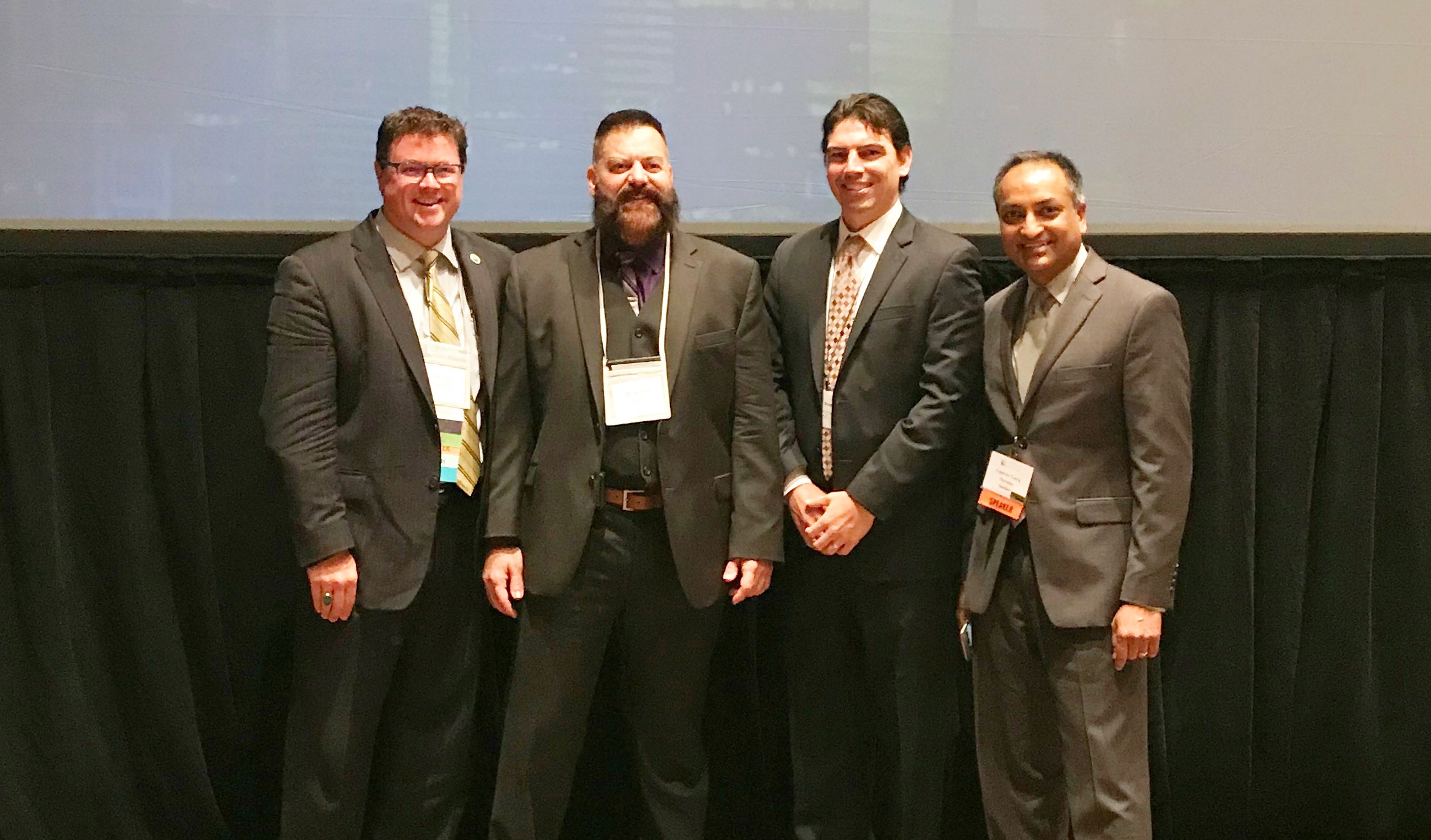MISAC Elevates the Position of Information Technology at the League of California Cities Annual Conference
As wireless technology continues to evolve—with faster speeds, increased efficiency and new applications—5G is poised to offer a limitless leap forward for the Internet of Things. California’s municipalities must play a key role in implementing this extraordi
“Cities are ground zero for 5G,” said Batalla, Head of Information Technology for the City of San Leandro, on a panel during the League of California Cities’ Annual Conference on September 13. “Empowering information technology to identify shared goals with other departments such as public works, planning, engineering and administration is vital to establishing and maintaining local control.”
Batalla was joined on stage by MISAC leaders Gaurav Garg, Northern Chapter Representative and Chief Information Officer for the City of Santa Clara, and Bryon Horn, Past President and Chief Information Officer for the City of Fresno. The session, “Getting the Most Value from your City’s Technology Investment,” was moderated by Jim Lewis, City Manager of Pismo Beach.
An audience of approximately 150—twice last year’s attendance—city staff members and elected officials gathered at the Long Beach Convention Center to learn about topics ranging from fiber optic networks, broadband and small cell/5G to citizen engagement and smart cities, all rooted in how information technology contributes to the value of local government. The format featured a series of brief presentations on issues and best practices.
“Presentations such as this empower us to get into city managers’ and elected officials’ head space,” said Horn of the content and venue. “MISAC is committed to explaining and demonstrating why information technology plays a critical role in improving municipal operations and connecting with communities.”
In his opening remarks, Lewis emphasized the value of allocating budget and staff resources to information technology, citing enhanced efficiency, empowered and engaged constituents and motivated employees.
He introduced Batalla, who discussed San Leandro’s fiber optic network through the lens of collaborating with other city departments to build a master plan. Batalla also shared how cities’ vertical assets will affect the future of small cell/5G, describing his and other communities’ access to street lights, including metal and wooden poles, and encouraging those in attendance to embrace opportunities for local ownership through best practices in small cell master license agreements.
Next up was Horn, who presented on customer relationship management and citizen engagement, with a spotlight on the City of Fresno’s FresGO, a mobile platform that allows residents to report issues ranging from illegal fireworks to graffiti, schedule service, track progress, provide feedback and receive real-time alerts. The tool has benefited operations by demonstrating service levels, ensuring resources are available and appropriately dispatched and providing insight into the community’s needs. Horn also took the opportunity to inform and recruit future members of and advocates for MISAC.
“Many of you belong to MISAC,” he said. “If you don’t, you should.”
Garg then took the podium for a discussion of smart cities—which he defines as a city that “connects data, technology and sensors to city services and people with the goal of improving the quality of life and strengthening the community”—touching on topics including Silicon Valley Power, Santa Clara’s full-service, green electric utility, and his strategic focus areas, including digital infrastructure, application modernization, citizen engagement, geographic information systems and cybersecurity.
Lewis continued the conversation on the why and how of smart cities, providing insight on the City of Pismo Beach’s current and planned projects that will enhance transportation, parking, renewable resources and resident engagement.
Addressing council members, he provided a reminder that “funding, policy and therefore innovation starts with and must be supported by you!”
“At MISAC,” concluded Garg, “we take pride in sharing information that will help our peers in the IT world advance municipal technology. We appreciate the opportunity to share our advice at the 2018 LOCC Annual Conference and we hope our audience members are able to apply our best practices in their own municipalities.”





